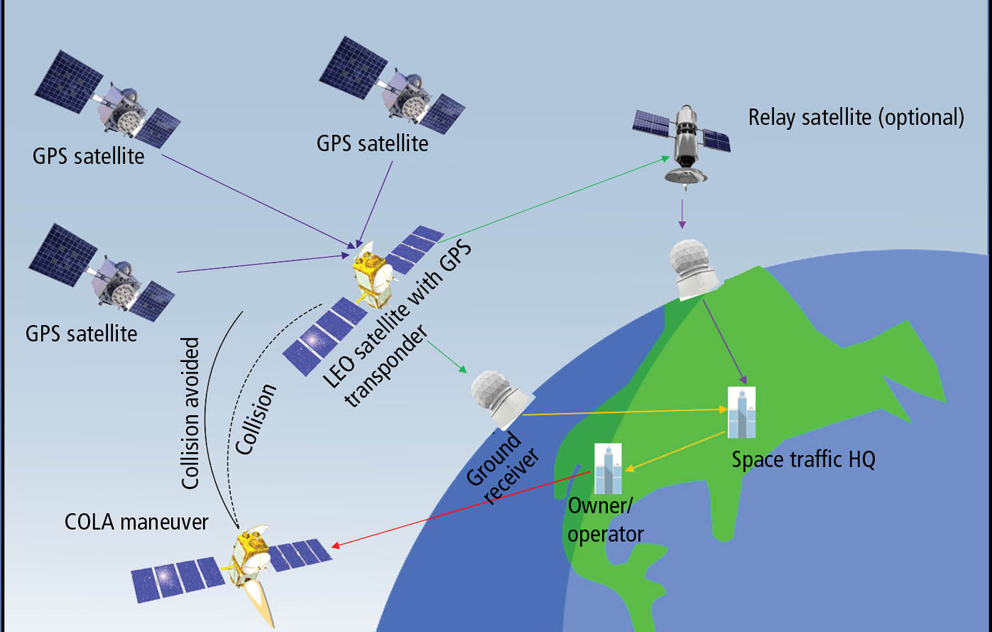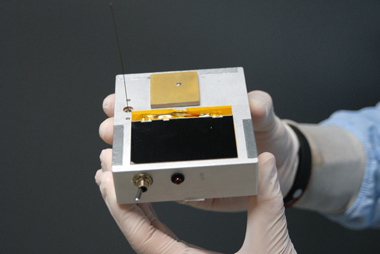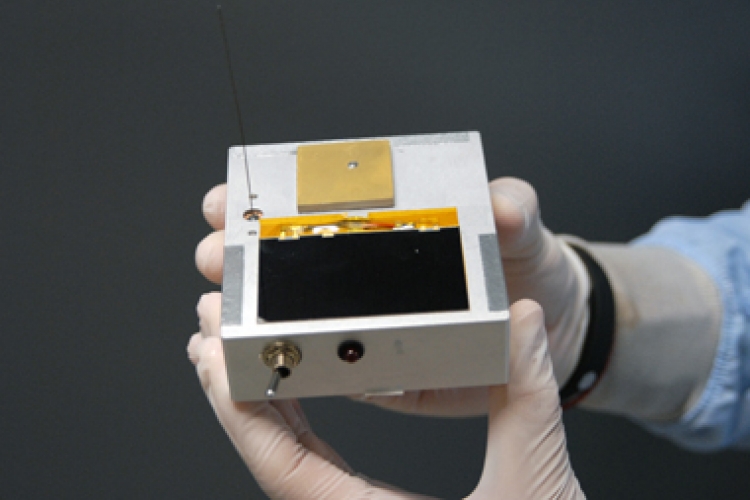When scientists at The Aerospace Corporation built the Orbiting Picosat Automated Launcher (OPAL) picosats nearly 20 years ago, they confronted a difficult challenge: how could they make such miniscule satellites visible to ground-based radar and optical telescopes? Ultimately, the problem was solved by tethering the two satellites together with a long cord that had gold wire dipoles woven into it, thereby increasing its radar cross-section.
The OPAL picosats were revolutionary at the time, but today, miniature and small satellites have become quite common. The problem of tracking them, however, has not gotten any easier. Moreover, the number of objects in space—both active hardware and inactive debris—has grown over time. This has made life increasingly difficult for spacecraft operators, who need to understand and manage the risk of a collision on orbit.

Active Tracking via GPS for Space Traffic Management
Researchers at Aerospace have been focused on the problem of space traffic management, and have derived a novel approach that draws upon another traditional area of expertise: GPS.
According to Andrew Abraham of the Mission Analysis and Operations Department, traditional passive tracking networks such as the Space Surveillance Network rely on the laws of physics to estimate where and when a tracked object will be. Still, various factors—intentional and otherwise—can alter a spacecraft’s speed and trajectory. When that happens, the spacecraft can be lost, and tracking stations need to apply additional resources to locate it again.
A better solution would be for orbiting objects to actively communicate with tracking stations. That can be done, Abraham says, by means of an onboard GPS transponder.
As envisioned, the device would transmit GPS data (position, velocity, and time) as well as a unique serial number. The encrypted signal would be received by ground- or space-based receivers and forwarded to a central coordinator for orbit determination and collision-risk assessment. The increased speed and accuracy would vastly improve calculations of collision probability and reduce the number of costly false alarms.

Space Debris and Proximity Operations
Such a system, Abraham says, would have ancillary benefits, as well. For example, the onboard GPS transponder could function independently, or provide input for a satellite’s navigation system. This, in turn, could facilitate proximity operations on orbit and provide insight into risky maneuvers. Most importantly, the transponders would not be restricted to active assets, but could operate on dead rocket bodies and other inactive components that contribute to the growth in hazardous space debris.
Satellite identification, also called “Identify Friend or Foe,” would be another benefit, said Abraham. “Unique, immediate, and unambiguous identification of space objects increases transparency and acts as a trust- and confidence-building measure with the potential to lower tensions in a contested space environment, should this technology become widely adopted,” he said.
GPS Transponder Conceptualization
GPS Transponders Created By CubeSat Technology
Aerospace is building these transponders by leveraging flight heritage of component parts from the highly successful AeroCube CubeSat program. Current efforts are focused on reducing the size of the transponder to roughly half the size of a pack of playing cards. That should make the technology feasible for a wide range of applications.
More information is available in the policy paper, "GPS Transponders for Space Traffic Management" that Abraham wrote in collaboration with the Center for Space Policy and Strategy.

